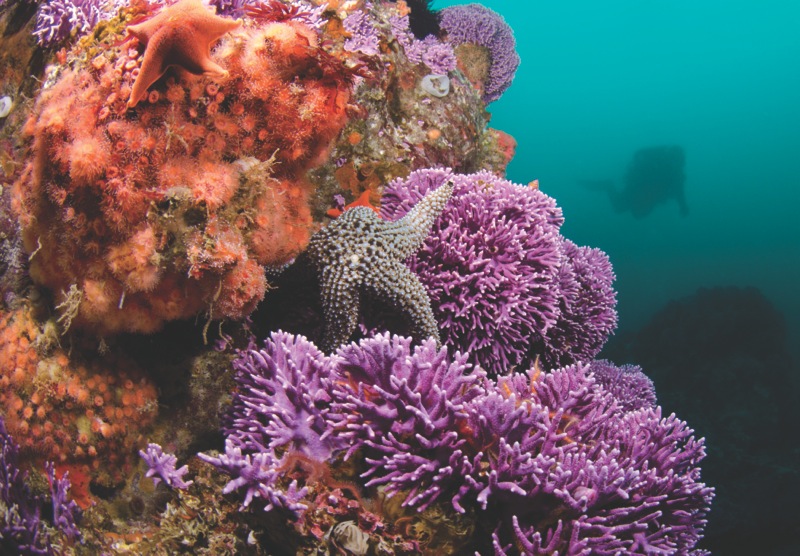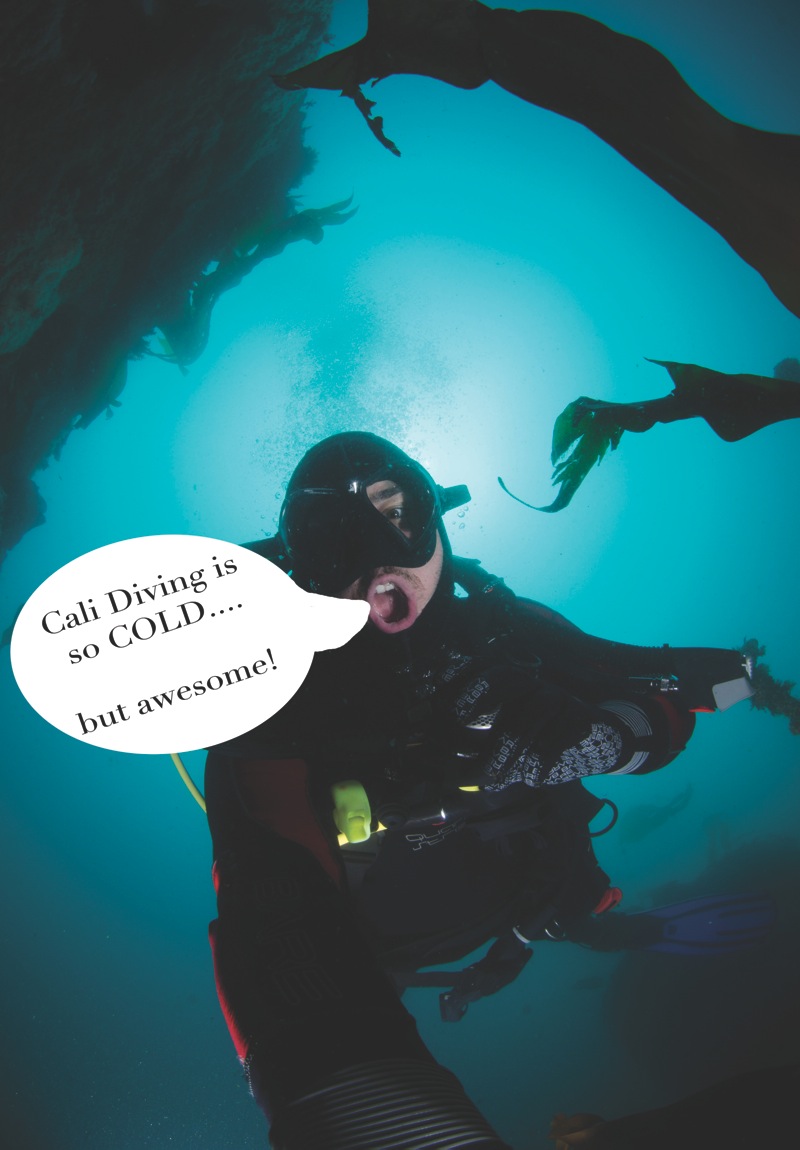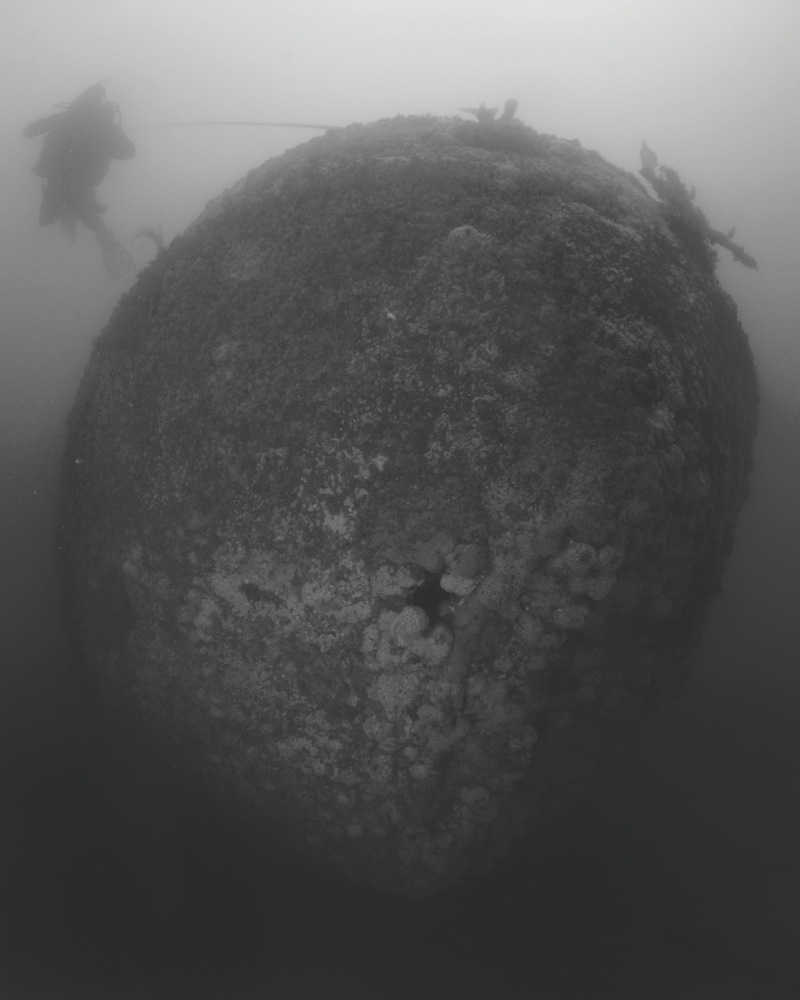Stepping onto the dive boat in San Diego, I could only hope that no one had taped a sign on my back that read “kick me- I’ve never dived in California.”
Hundreds of miles away from my home in New York City, I felt a little like the dorky east coast diver sharing the boat that day with all of the “cool kids.” After all, they had the looks, easily slipping into their stylish dry-suits while I squeezed into my brand-new 7mm wetsuit. They even had that rebellious attitude I had always envied, ditching work on a weekday afternoon to do something a little less mundane. They were the “cool Cali divers.”
Divers from the east coast –that’s any anywhere west of California- aren’t without stereotypes of our own. We are often seen as the divers who will traverse the globe in search for the best in tropical diving, but would never even set one toe in local waters that dip below the 80-degree mark. And while most dorky divers from out east would be content with only visiting tropical destinations, I was determined to sample some of the world’s best cold water diving right in America’s backyard. I was ready to be one of the cool kids.
Words & Photos by Joseph Tepper
My California dive experience began when the Waterhorse charter boat stopped directly above one of San Diego’s most iconic sites- the wreck of the HMCS Yukon. I had the honor of diving with two of California diving’s coolest kids, and California Diver contributors, Andy Sallmon and Allison Vitsky. There’s nothing like having two local divers show you what rewards are waiting for the east coast diver willing to sift through California’s cold and the murk.
I knew that I was in for a treat when Allison, who has dived and photographed the Yukon dozens of times, explained that even she had failed to shoot everything the wreck had to offer.
Bobbing on the surface near one of the Yukon’s mooring balls, I began to wonder why I had bothered coddling myself in full 7mm and hood. After all, my computer was reading a balmy 72 degrees on the surface, and even as I moved down the line the temperature seemed to drop only a few degrees. Then the thermocline hit…
“Cold, colder, colder-er,” I thought to myself as the bridge of the Yukon finally materialized out of the green tinted water at 70 feet, at which my computer shivered in 50 degree water.
For a traditionally tropical diver like myself, the amount of growth accumulated on the Yukon in the decade since her sinking was incredible. Almost every inch of the steely canvas is painted with virginal, white anemones and the pastel pink of other anemones. As a photographer, the vast proliferation of anemone growth along the deck and exposed hull makes a perfect foreground subject framed in front of the emerald water.
We remained on the Yukon for a second dive to take full advantage of the day’s superb visibility – upwards of 50 feet. I like to think I brought some of the tropical visibility with me. After all, the water in Wreck Alley was –dare I say it– almost as blue as the tropics that day!
While the budding artificial reefs of Wreck Alley are certainly worthy of dozens, if not hundreds of dives as Allison had alluded, I was excited to discover what other natural wonders San Diego’s waters had left to discover. With this determination, I set my sights on the Coronados Islands, just an easy 45-minute sail offshore.
Instead of squeezing into one of the area’s larger boats along with 20 other out-of-towners that visit los Coronados every week, I joined Allison and Andy on a small, private vessel to explore some of the lesser dived sites in the area. A chain of small islands, the Coronados are rather undistinguished above the surface, all but barren rock except a few trees scattered around island. It is the islands’ distinct shape underwater that attracts such a proliferation of life under the waves.
Our first stop was a “secret” site called Deep Purple, which features some of the largest accumulation of brilliantly purple hydrocoral in the region.

Divers explore the off-the-map dive site Deep Purple, which features stunningly bright purple hydrocoral.
With no official mooring ball, this off-the-map site lies at around 100 feet on the crest of a ridge that extends from the island’s base. At such a depth, and with visibility and currents always a roll of the dice, Deep Purple is by no means a traditional tourist dive, but is worth the effort for any visitor or even local diver. (That’s if you can wrestle the coordinates from Captain Danny of Yellow Boat Charter).
The main attraction of the site, as its namesake suggests, is the perfectly purple hydrocoral, which seems to encrust almost every inch of rock within site. On its own, the hydrocoral is impressive, radiating a purple glow even at 100 feet below the surface. However, this unique habitat also draws in scores of other creatures both big and small- on one dive alone we saw dozens of scorpionfish, several baby wolf eels, and five young mola molas.
After our dive at Deep Purple, we moved just around the island’s corner to one of San Diego’s most tourist-visited sites- Sea Lion Rock. We glided into the small cutout to an all-too-familiar sight– rather than frolicking in the unusually blue waters, we found almost all of sea lions napping in their rocky enclave.
Hoping the stars of the dive would be more energetic under the water, we dropped into the cove and waited patiently on the rocky bottom. Other than a few sea lion subjects zipping about, cutting through our streams of bubbles, the beginning of the dive was rather slow, and begged the question: why were we the only mammals in the water?
Just as this question passed through my mind, the reason appeared right out of the blue- literally. A giant school of mackerel, undulating like a silvery blob of mercury, wrapped itself around us and seemed to drown out what light managed to make it through the turbid water. The sea lions had already eaten their fill of mackerel for the day and were now taking their post-meal nap.
An especially rare sighting in the area, the school of mackerel fearlessly slithered along the rocks edge, almost ignorant of the sea lions sleeping just a few feet above. The mackerel seemed as un-phased by our presence as the dozens of predators on bed rest a few feet above the surface, only flinching in uniform with the pulses of light emitted by our strobes, which I couldn’t fire fast enough. My heart kept beat with the shutter click of my camera. The school split and reunited. From the tight shape of a ball, the mackerel stretched out into a long stream, a river of fish running along the boulders.
Back on the dock at the end of the day, I tried my hardest to keep cool and collected despite the schooling mackerel, baby mola mola, and rolling meadows of purple hydrocoral. It was no use. Luckily, I wasn’t the only one in the group giddy about the day’s diving- even Allison and Andy admit it was one for the books. They even invited me for fish n’ chips and a beer to cap it off.
Seems like I am finally one of the cool kids – now I just have to get a dry suit.
Words & Photos by Joseph Tepper
Got a story to tell? Send us an email and we’ll share it with the dive community!


